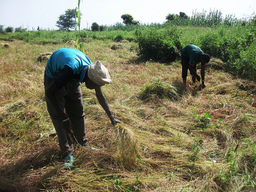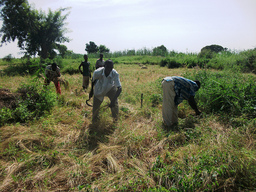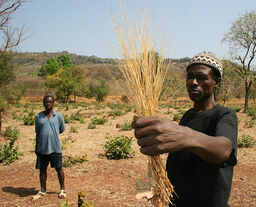Fonio
Content
Content
Description
Uses
Propagation
References
Common Pests and Diseases
Diseases
Category : Fungal
Pangola stunt Pangola stunt virus (PaSV)
Symptoms
Stunted plants; slow growth of plants after mowing or grazing; yellowing, twisting or or kinking of young leaves and inflorescences; swelling of small leaf veins; excessive tillering; leaf margins turning purple
Cause
Virus
Comments
Widespread in warm regions all over the world including USA, Africa, Central and South America and Asia; transmitted by the whitebacked planthopper Sogatella furcifera




